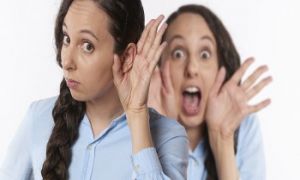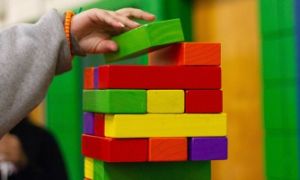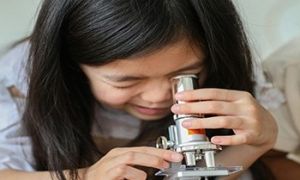NAIDOC Week 2022 starts from 3 July to 10 July. NAIDOC Week celebrations are held across Australia to celebrate the history, culture and achievements of Aboriginal and Torres Strait Islander peoples. The following provides Activities, Crafts, Songs and Resources to celebrate NAIDOC Week and incorporate ATSI Communities into your Early Childhood Service.
Here are some ideas on how to celebrate NAIDOC Week and incorporate ATSI Communities in your Early Childhood Service:
- Display the National NAIDOC Poster or other Indigenous posters.
- Start your own hall of fame featuring Indigenous role models.
- Listen to Indigenous musicians.
- Little Yarns Podcast Series For Pre-schoolers - Little Yarns is all about the various languages, tales, and countries of Indigenous Australia and is a great listening resource in early learning services.
- Teach Children The Aboriginal Language Of Wiradjuri Through Games And Activities
- Create a calendar of indigenous events that can be celebrated at the service. Add local events that are happening within the Indigenous community to the parent and staff notice board.
- Invite indigenous performers and artists into the service and hold workshops for children and families.
- Network with the local Aboriginal community and partner with them on a specific project.
- Invite Elders from your local community to take part in celebrations and significant events.
- Name an area in your service in a local language, Consult with the local Aboriginal Lands Council in regards to protocol and use of language in your local community.
- Set up a "sister service" in-country or in remote areas. Stay in contact through the internet or exchange postcards or mail.
- Plant a tree in your service to acknowledge a significant date on the Indigenous calendar.
- Play traditional Indigenous games.
- Ensure your service has a range of Indigenous resources - maps, flags, music, puzzles, books, dolls, videos, posters etc.
Songs and Rhymes
- Inanay - A Torres Strait Islander song about a goanna in Yorta Yorta, a language of one of Torres Strait Islander tribe in Victoria.
- Taba Naba- This song is about going to the reef and is accompanied by a sit-down dance where the dancers perform traditional movements corresponding to the lyrics.
- Pitjantjatjara 123 - Learn to count to 3 in Pitjantjatjara with this simple song. A dialect of the Western Desert Language, the largest language group of Aboriginal Australia.
Crafts and Activities
Dotty Art - Create dot art using cotton buds. Aboriginal people use dot paintings as a way to create and re-tell stories using symbols and colours such as red, yellow, brown and orange.
Track That Animal - This is a simple and fun activity for children to track Australian animals.
Australian Animal Track Prints - Children will learn to "track" the footprints of different Australian animals.
Aboriginal and Torres Strait Islander Flags With Coloured Stones - This simple activity enables children to use coloured rocks to create the ATSI flags.
Colours As Cultural Symbols - This craft-based activity reminds children of the cultural meanings and significance of the colours that make up the Aboriginal flag and the Torres Strait Islander flag.
Nature Bracelets - Collect and gather natural materials from the local environment and use them to create and decorate this bracelet.
Printables
Bush Tucker Posters - The Bush Tucker Posters detail information on the nutrition bush tucker foods provide to the Aboriginal people. These posters can be used as a display to start conversations with children on bush tucker.
Aboriginal Symbols Flashcards - Aboriginal Symbols are a symbolic language that Indigenous Australians use to tell stories of the Dreamtime and are used in contemporary art. Using these aboriginal symbol flashcards, children can be introduced to Indigenous Culture. These flashcards can be used in numerous ways to extend children's knowledge.
Australian Dot Colouring - The Australian Dot Colouring provides 8 Australian animals on a background of dots. Children can make patterns using different colour paints, textas, crayons, cotton swabs etc. Originally, indigenous people of Australia used dots to disguise the sacred meanings behind the stories in the paintings. They drew designs that included dots on the soil, and sand, and made body paintings for ceremonies because they could easily erase them as they were considered sacred.
Children's Acknowledgment of Country -. Incorporating a daily Acknowledgement of the Country is important because it encourages children to engage with diversity and respect.
Within The Environment
- Block Play - with small Australian animals, deserts and billabongs, linking with storytelling and music and movement.
- Cooking and Food-related Experiences: using indigenous and/or native ingredients, finding and tasting‘bushtucker’ in collaboration with local AboriginalandTorresStrait Islander person.
- Dolls and Props - having dolls with a range of skin colours and features, and using traditional baby carriers (coolamons) and other culturally relevant items.
- Family Histories - talking with children about where they come from, who they are connected to, who the members of their families are. Using questions such as these along with maps can assist in showing family connections to other countries and places. Part of this exploration can be about Aboriginal and Torres Strait Islander people’s connections to their Land and their Country, tribal groups and Nations.
- Games - traditional Aboriginal and Torres Strait Islander games or games involving Australian animals.
- Language - using words in local Aboriginal languages for greetings, finding out the aboriginal names of Australian animals, plants, body parts and other terms children understand. Be sure that you use a reliable source of information for these words, for example, the local cooperative or local families. As you would do with all children, ask Aboriginal and Torres Strait Islander children’s families about words they commonly use at home so that you could include them at your ECEC service or school, and so that you have a better understanding of the words the children might use.
- Movement Experiences - learning some traditional and contemporary Aboriginal dance movements, for example, those that are based on Australian animals, and creating new movements.
- Music Experiences - listening and responding to traditional and contemporary Aboriginal and Torres Strait Islander music or making and using clapping sticks. Remember that traditionally only males are allowed to play or even handle didgeridoos.
- Nature-related Experiences - planting trees or other plants indigenous to your area using advice from an Aboriginal Elder or Leader from the local cooperative or exploring indigenous plants in the area; gathering natural materials such as pods, leaves, bark, flowers and seeds and sorting and classifying them.
- Puzzles - sourcing and using puzzles that have diverse images of Aboriginal and Torres Strait Islander cultures, people and animals.
- Resources - puzzles, books, musical instruments, recorded music, DVDs, posters and images of contemporary Aboriginal and Torres Strait Islander people, dolls, artwork, flags, maps and fabric with traditional and contemporary patterns. It is important to source these resources where possible from Aboriginal and TorresStrait Islanderagenciesororganisations to ensure that they are authentic.
- Seasons - learning about the seasons as described and understood by Aboriginal and Torres Strait Islander people.
- Significant Anniversaries and Celebrations - including significant days/weeks for Aboriginal and Torres Strait Islander people in your service’s calendar of events.
- Storytelling, Reading and Using Picture Books - including Creation Stories and oral storytelling.
- Visitors - inviting Aboriginal and Torres Strait Islander dancers, musicians or storytellers or those in the community with other talents and interests to share these with the children. It is critically important to involve AboriginalandTorresStraitIslanderpeopleinways that go beyond sharing a traditional culture. It is important for children and families to learn about the various ways that AboriginalandTorresStraitIslanderpeoplecontributeto the community.
- Visual Arts Experiences: using natural materials such as ochre and nature colours for painting and drawing; discussingAboriginalandTorresStraitIslanderartby different artists and identifying styles, symbols and stories
NAIDOC week is a great opportunity to participate in a range of activities and to support your local Aboriginal and Torres Strait Islander community.



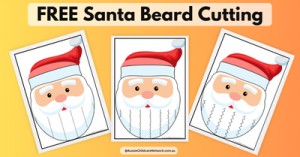


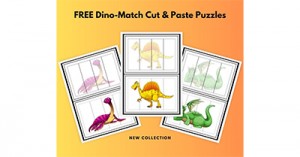
 Open ended questions cannot be responded to with one word answers such as yes or no. These types of questions enables a child to provide
Open ended questions cannot be responded to with one word answers such as yes or no. These types of questions enables a child to provide During your child’s preschool years, an important milestone begins to emerge. This is the development of pre-writing skills. Pre-writing skills are used to encourage, develop
During your child’s preschool years, an important milestone begins to emerge. This is the development of pre-writing skills. Pre-writing skills are used to encourage, develop Open ended materials enables children to play freely. They are objects that have no rules to follow, use or function. Raw materials that can be
Open ended materials enables children to play freely. They are objects that have no rules to follow, use or function. Raw materials that can be An Acknowledgment of the Country is a way of showing respect for the Traditional Owners and can be given by both non-Indigenous people and Aboriginal
An Acknowledgment of the Country is a way of showing respect for the Traditional Owners and can be given by both non-Indigenous people and Aboriginal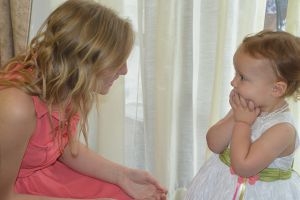 Language plays an important role in a child’s development. It enables a child to communicate effectively with their family, learn at school, socialize with friends,
Language plays an important role in a child’s development. It enables a child to communicate effectively with their family, learn at school, socialize with friends,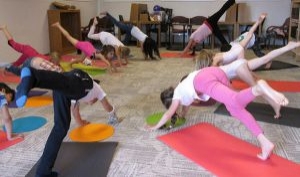 Like adults, children have to deal with their own stress in life. Moving house, starting a new school, preparing for a new sibling - these are
Like adults, children have to deal with their own stress in life. Moving house, starting a new school, preparing for a new sibling - these are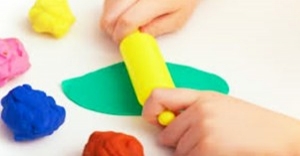 Playdough is such a versatile material. It provides numerous benefits to children as they manipulate it, it is safe and soothing and provides children with
Playdough is such a versatile material. It provides numerous benefits to children as they manipulate it, it is safe and soothing and provides children with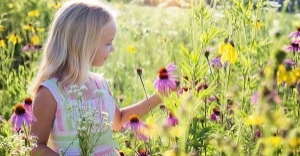 Teaching children about sustainability enables them to appreciate and respect the natural environment. Early childhood services can provide meaningful hand on learning experiences in order
Teaching children about sustainability enables them to appreciate and respect the natural environment. Early childhood services can provide meaningful hand on learning experiences in order Recycling is an important concept that teaches children to care for the environment. It encourages children to be responsible and show a growing appreciating for
Recycling is an important concept that teaches children to care for the environment. It encourages children to be responsible and show a growing appreciating for When children apply paint to paper, glue things together, or pound a lump of clay, they experiment with colour, shape design and texture.
When children apply paint to paper, glue things together, or pound a lump of clay, they experiment with colour, shape design and texture.
